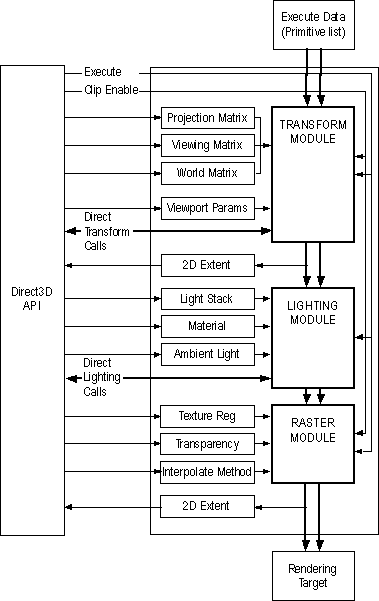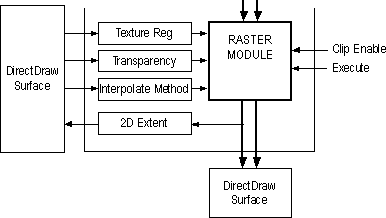
The Direct3D architecture is based on a virtual 3D rendering engine composed of three separate modules:
·The transformation module handles the transformation of geometry by using three 4-by-4 matrices, one each for the view, world, and projection transformations. This module supports arbitrary projection matrices, allowing perspective and orthographic views.
·The lighting module calculates lighting information for geometry, supporting ambient, directional, point, and spotlight light sources.
·The rasterization module uses the output of the geometry and lighting modules to render the scene. The scene description is in an extensible display-list–based format that can support both 2D and 3D primitives.
The following illustration shows how the three modules of the rendering engine interact with the rest of the Direct3D architecture.

The rasterization module interacts with DirectDraw as shown in the following illustration. Direct3D makes use of DirectDraw surfaces as render targets and texture sources.

Each of these modules can be hardware-accelerated or emulated in software. Direct3D can be queried to verify which components are currently running under emulation. When used together, these modules form the Direct3D rendering pipeline.
All three modules are dynamically loadable and can be changed on the fly between rendered frames. This allows new modules to be swapped in for either hardware acceleration or different rendering effects. Direct3D comes with one transformation module but a choice of two lighting and two rasterization modules. This provides greater flexibility in lighting and rendering, allowing the possibility, for example, of rendering more realistic scenes by simply switching the lighting module. An independent vendor could even provide its own special-effects-rasterization modules.